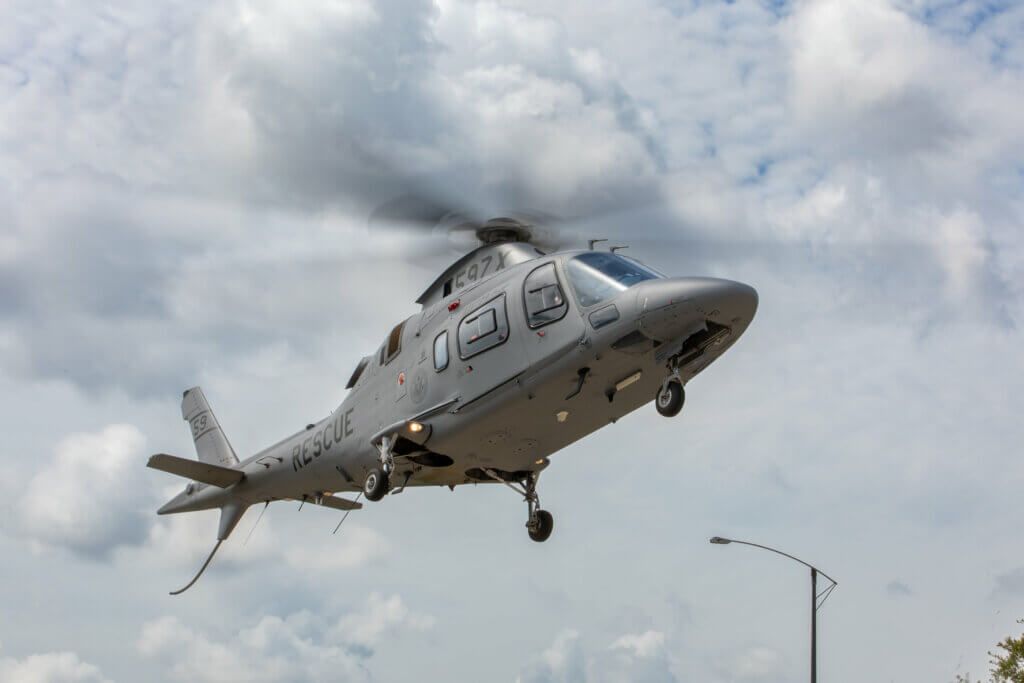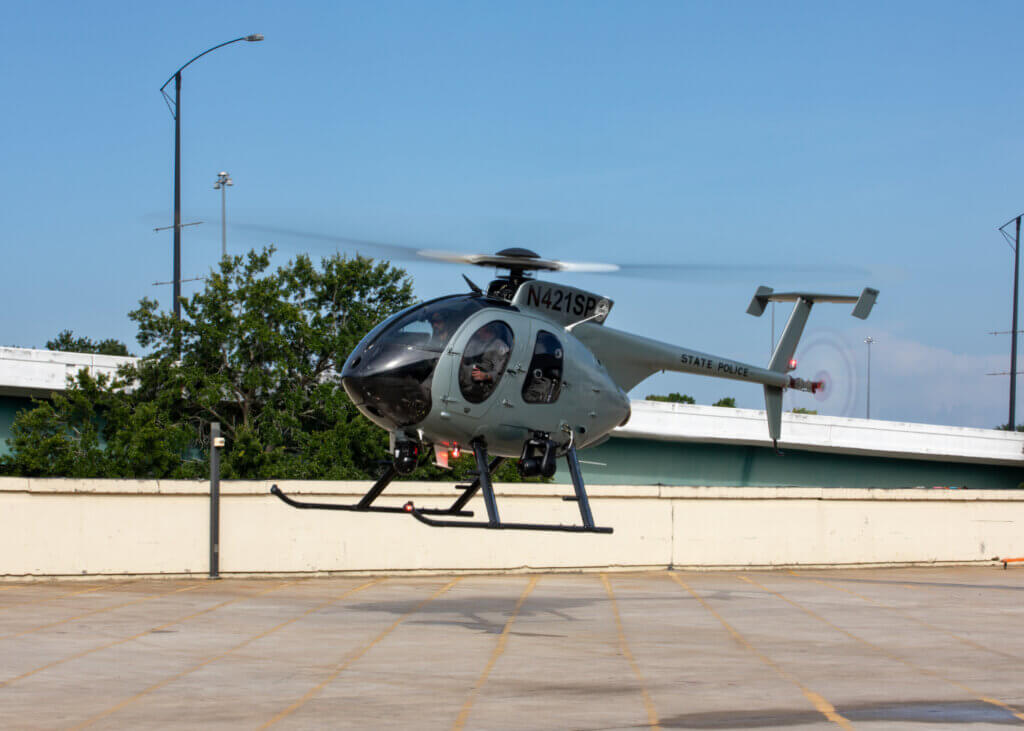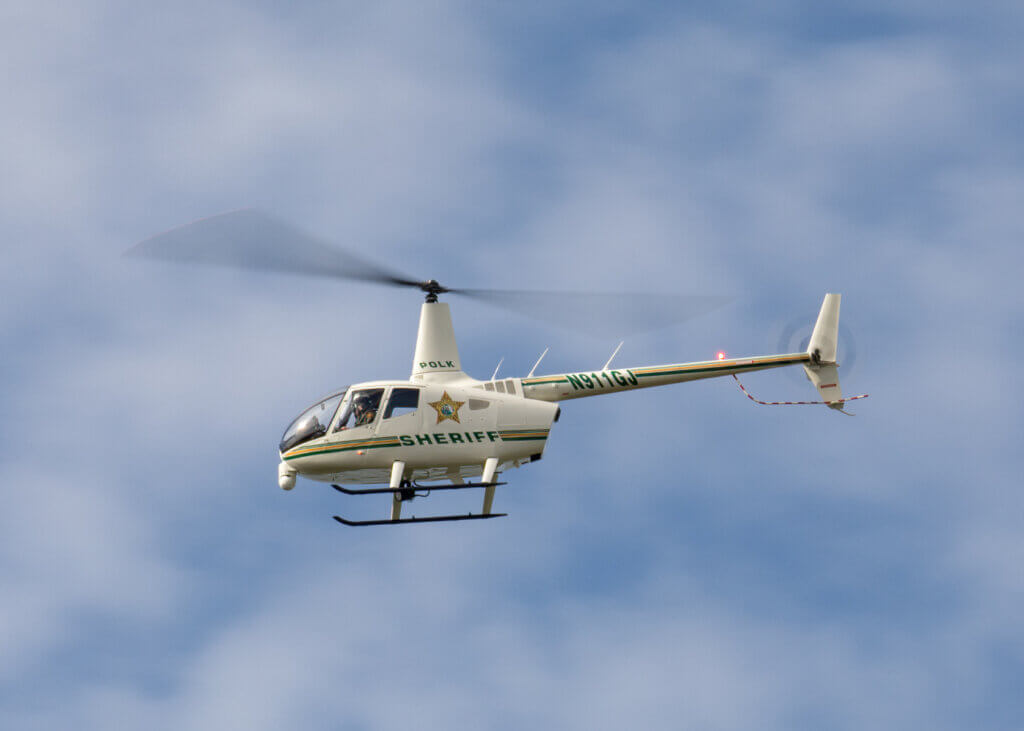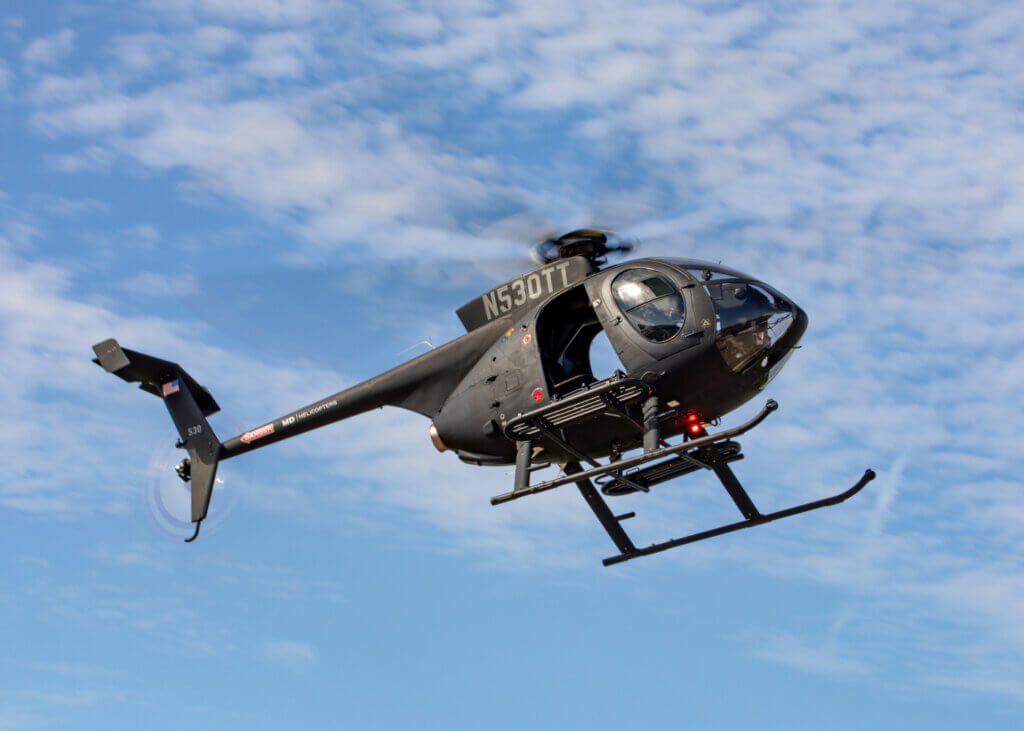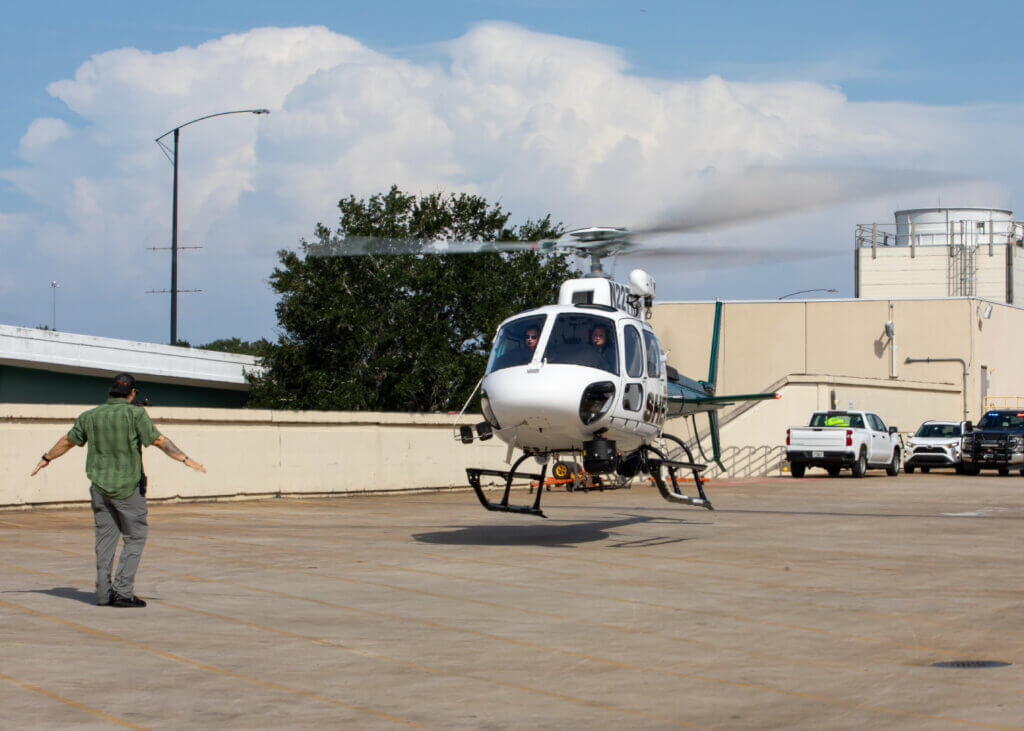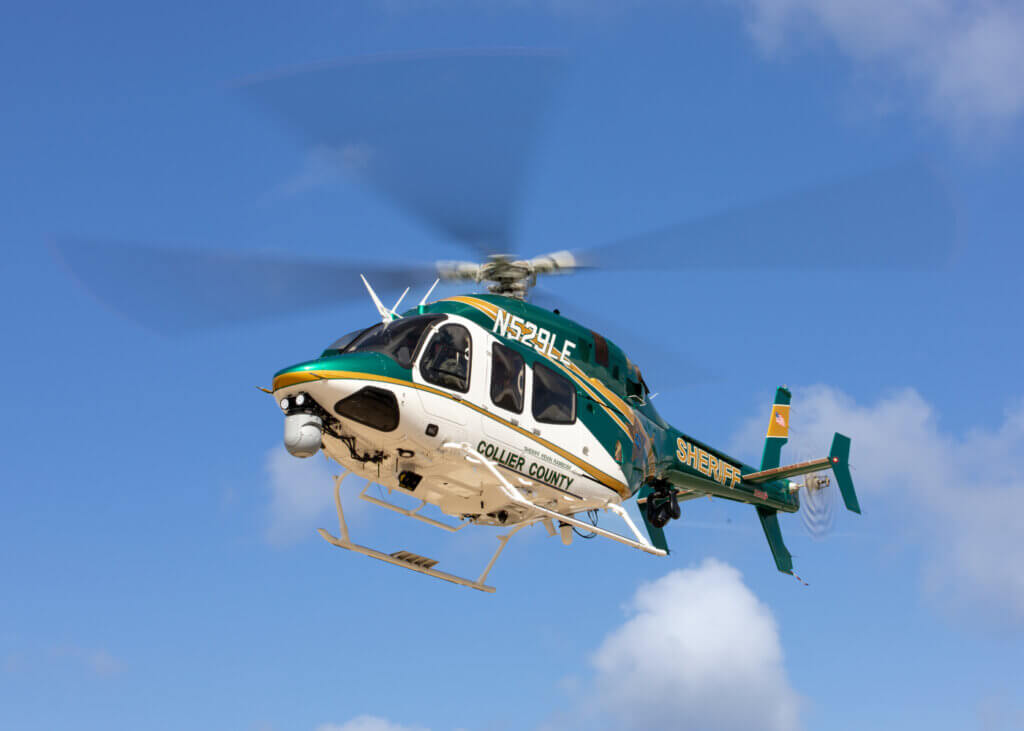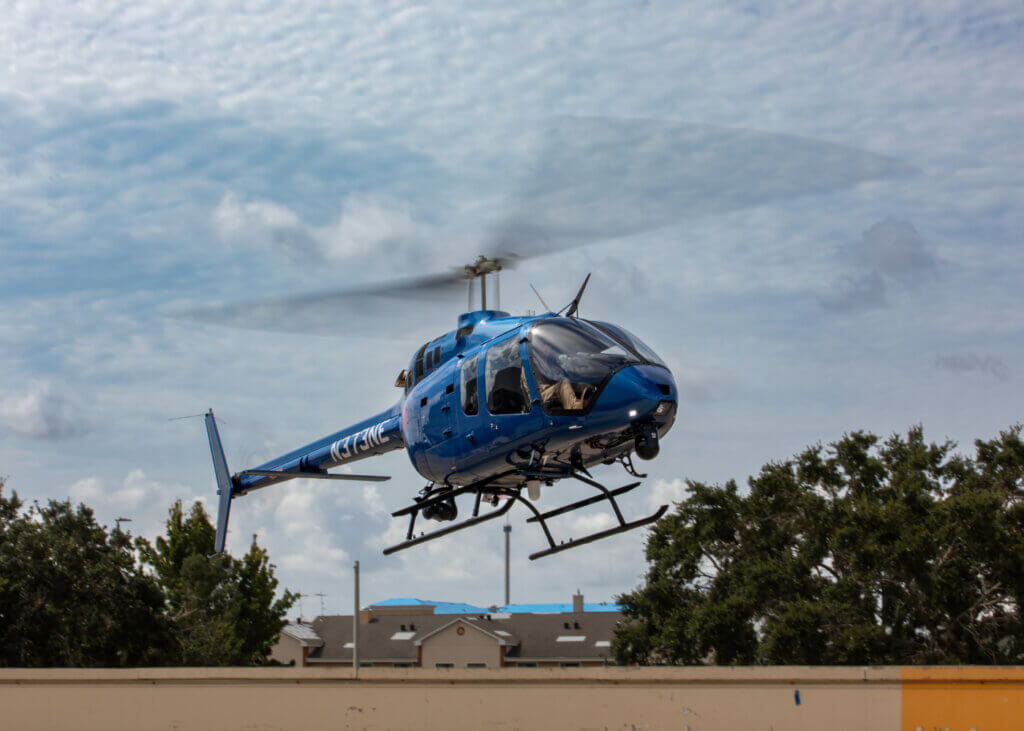Orlando, Florida, was once again the gathering place for the Airborne Public Safety Association’s (APSA) APSCON tradeshow from July 17 to 22. The annual event continued the now two-year trend of combining forces with the drone community to concurrently host APSCON Unmanned.
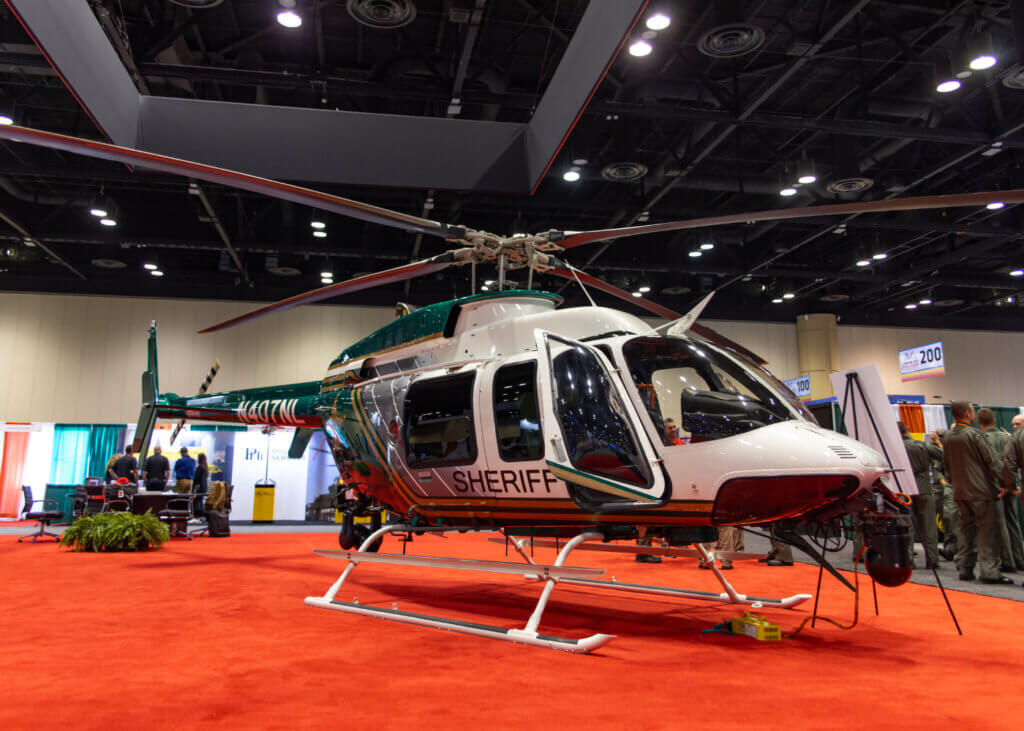
About 150 vendors from across the globe showcased their products and services at the Orange County Convention Center. Major helicopter manufacturers were well represented with nine helicopters flown in for attendees. In addition, Bell offered demo flights in its 505 and 407 models, and had a static display of the Grand Caravan EX in law enforcement (LE) configuration.
The exhibit hall was open from July 19 to 22, and a wide selection of courses and educational sessions were held throughout the entire week. Classes included tactical flight officer training, airborne thermographer certification, flight instructor and maintenance inspection authorized renewal, and several more. As well, several tech talk seminars were conducted on the show floor, and the popular water egress and survival training was held in a local hotel swimming pool.
Attendance appeared to be the strongest in several years — a sentiment echoed by visitors on the show floor, as well as Dan Schwarzbach, APSA executive director.

“We had pretty good numbers last year, especially considering we had just come out of the pandemic, and it seems we will easily exceed those figures,” Schwarzbach told Vertical. “There is a very upbeat feeling here this week, and we’ve been receiving a lot of positive feedback from both the exhibitors and attendees.”
During the 28th annual Teledyne FLIR Vision Awards ceremony and dinner, several LE departments were recognized for their outstanding efforts, with top honors going to the Prince George’s County Police Department.
Exhibitors also displayed several new and upgraded products. Here are some of the highlights from the show.
Axnes MP30 compact base station
For nearly 30 years, Norway-based Axnes has been providing communications solutions for a variety of markets, most notably the aviation industry. As an approved supplier for Airbus, Leonardo, Bell, and other original equipment manufacturers (OEMs), its wireless products have become well-known in the LE and search-and-rescue (SAR) markets.
Making its tradeshow debut was the all-new MP30 compact base station. Similar to its sibling model, the BST30 mobile base station, the MP30 includes many features required for special mission operations but foregoes options that may not be needed in all situations. With fewer features, Axnes is able to offer the MP30 at a lower price point.
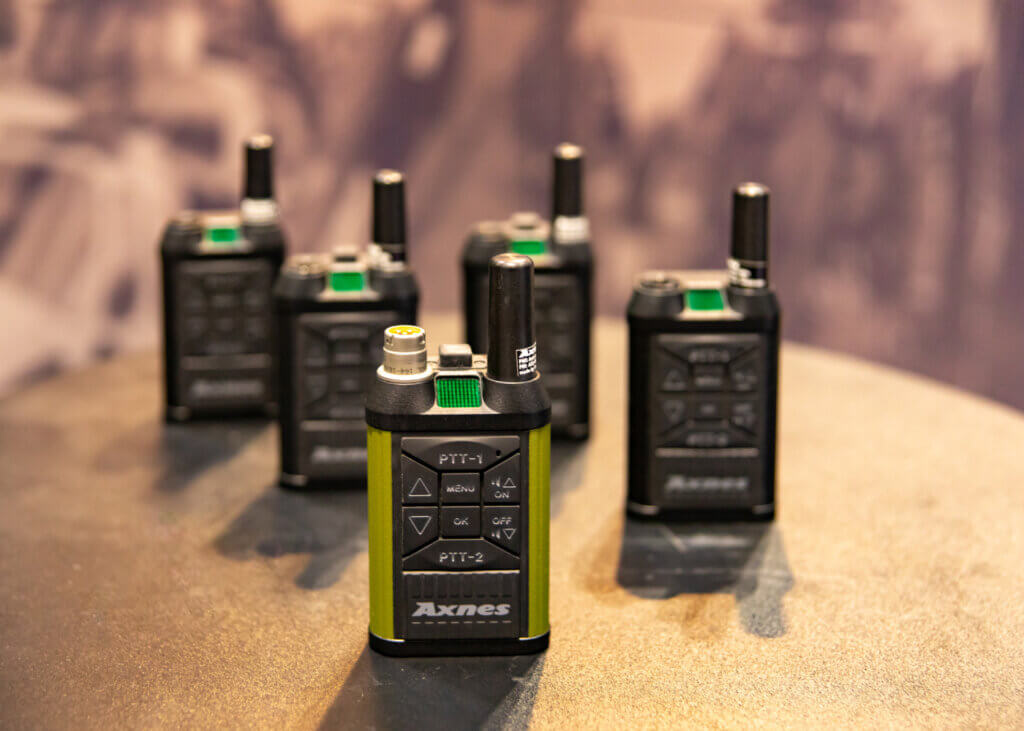
“We’re excited to offer the new MP30 compact base station to our customers in the law enforcement, SAR, and military fields,” Tre Blake, military solutions tech representative at Axnes, told Vertical. “We’ve seen great success with the BST30, but we recognized that not all operators need all of the capabilities and range that model provides. The MP30 compact base station … has most of the options of its bigger brother but with limited transmission and reception range, items not all scenarios need.”
Current users will be familiar with the form factor of the MP30 compact base station, as it is nearly identical to the compact MP30 handheld transceiver. As an intercom plug-in, via the Amphenol 164 series interface, it will act as a base for an unlimited number of transceivers, providing wireless, full-duplex, hands-free communications out to approximately 300 meters (984 feet).
Features that will still be included are noise suppression and handset durability. As part of the Axnes wireless intercommunication system (WICS), the MP30 compact base station allows for system scalability, providing future-proofing if the user upgrades to the BST35 or BST50.
“We continue to listen to our customers and offer a flexible range of products that we feel will make their missions safer and more effective,” Blake added.
The MP30 compact base station will soon be available directly through Axnes.
Boost Human External Cargo Systems
The transportation of human external cargo (HEC) has been around since the 1960s and has remained a viable and sometimes preferred approach in the decades since. Capitalizing on this mode of rescue and transportation is Boost Human External Cargo Systems, a Canadian company selling their wares across the globe.
“The Boost PCDS [personnel carrying device system] allows for the movement of multiple personnel at a time, in a safe, certified manner,” Ken Bibby, training development manager at Boost, told Vertical. “This system can be used on a variety of helicopter makes and models and has received certification from FAA, EASA, Transport Canada, and [the Civil Aviation Administration of China].”
With a load capacity of 1,100 pounds (500 kilograms), up to five people or a combination of live loads and equipment can be transported — this is more than any comparable system on the market. The flexibility of the system is evident in the catalog of helicopter models the PCDS is available for.

“Our dual-hook system is certified for several Bell models [205/212/412, B206L/407], Airbus AS350/355s, and MD500s,” Bibby said. “It can also be rapidly reconfigured for the mission at hand, whether it’s for rescues, powerline inspections, personnel transport, or a variety of other tasks.”
In addition to the PCDS hooks, Boost also manufactures a full lineup of suspension lines/attachments, personnel harnesses, lanyards/restraint straps, and more. If there is a product used in HEC operations, chances are that Boost offers it.
To ensure safe operation of its products, Boost also provides training in HEC techniques, including the use of the PCDS. This instruction can be completed at either the customer’s location or Boost’s facility in North Vancouver, British Columbia.
The Boost HEC PCDS, along with the entire catalog of HEC products and training, is available for all models listed above.
RMCI health and usage monitoring systems
RMCI has been providing aircraft health and usage monitoring systems (HUMS) for nearly 20 years. During that time, they designed a lightweight, cost-effective system that has exponentially advanced products that were in place when the company opened its doors in the early 2000s.
“Our goal is to help operators in law enforcement, paramilitary, search-and-rescue, and firefighting,” Kenneth Speaks, CEO of RMCI, told Vertical. “They did not have a lightweight system that would be appropriate for light operators. That is what we set out to offer.”
Over four days during APSCON, RMCI provided a live demonstration by installing its Expandable Rotorcraft Diagnostic System (XRDS) into a 2006 Agusta A109E Power, equipped with dual Pratt & Whitney PW206C engines. In this configuration, the XRDS consists of a small control box and 13 sensors.

“One of the advantages of our configuration is that for ease of installation and to make things simpler for the operator, we use the same sensor in all locations,” Speaks explained. “The same high-power, high-fidelity accelerometer goes on the transmission, the shafts, and the gearbox.”
Speaks said the system’s lightweight design doesn’t come at the expense of performance. The system that the U.S. Army uses weighs about 103 lb. (47 kg). Meanwhile, the XRDS weights 12 lb. (5.4 kg).
“That’s a big difference, especially when you get into smaller helicopters where every bit of weight counts,” Speaks said. “When we began, the U.S. Army had already purchased systems for its 3,000 helicopters, but the HUMS wasn’t working as well as they had hoped. Our engineers and scientists worked behind the scenes and, using our algorithms, were able to detect issues that the other systems were not finding.”
Speaks was quick to note that the XRDS is all about early detection and saving money. And more than just detecting problematic anomalies, the XRDS can provide useful, real-time data on the operation of the aircraft.
“We have the ability to detect and subsequently prevent faults in aircraft well in advance of a chip light or precautionary landing,” he said. “There is no question that a single, prevented incident has the potential to pay for the cost of our system.”
The RMCI XRDS HUMS is currently certified and available for several helicopter models, both single- and twin-engine, including the MD500, Bell 407, AS350, UH-1, and many more.
Vislink Aero5 airborne transmitter
“Our goal is to provide the best air-to-ground data transmission system at a more cost-effective price than traditional offerings,” Sean Van, Vislink vice president of product management and director of airborne video downlink system (AVDS), told Vertical.
To meet this lofty goal, Vislink has unveiled the Aero5 airborne transmitter. Most uplink/downlink products in use by public safety operators require not only a dedicated antenna on the aircraft but also a proprietary receive/transmission antenna on the ground. The Aero5 differs by utilizing existing cellular sites to relay data from the airborne platform to surface-based customers.
“The Aero5 uses a bonded cellular system, which takes advantage of whatever cellular network is available where our customer is operating” Van said. “By implementing this approach with the ability to move seamlessly from one network to another, there is no throttling of data. This is crucial in time-sensitive, life-threatening situations.”
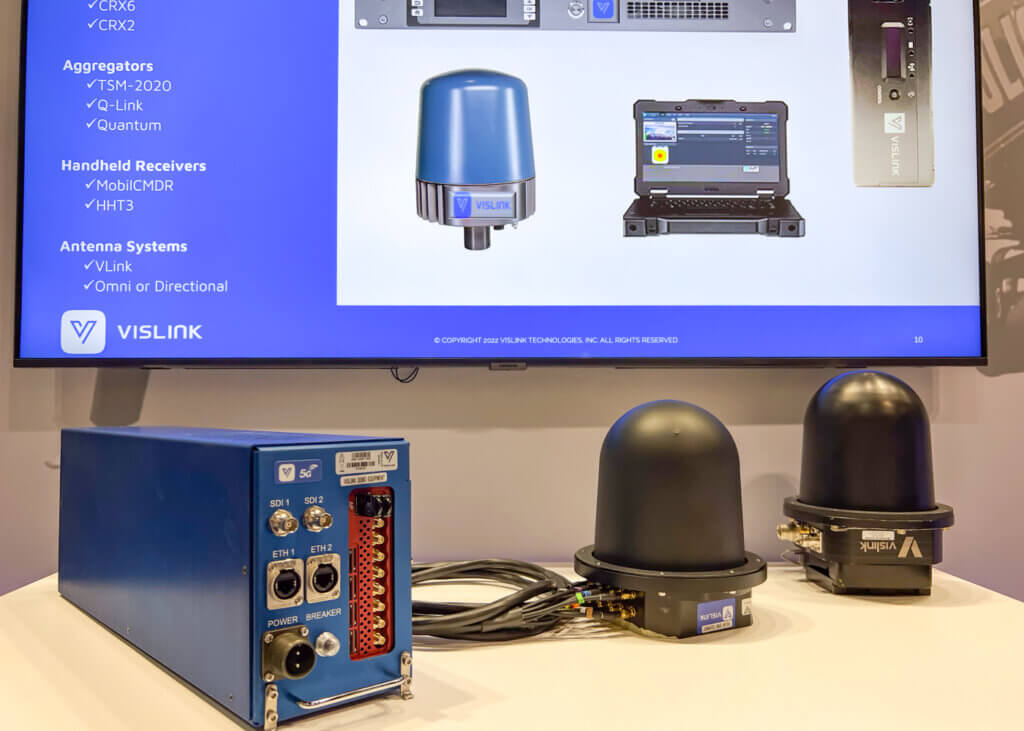
The Aero5 is a two-box solution where the brains of the product, the IDU, is sized to fit upright in a standard ARINC mount with all connections easily accessible on the front panel. The second portion is the antenna pod, which is externally attached to the aircraft via a dedicated mount. The missing, unnecessary portion of this solution is the ground-mounted antennas, which can be costly and are only effective for specific areas and ranges.
“The Aero5 contains eight separate modems that can be autonomously assigned to different cellular networks, based on bandwidth needs,” Van explained.
This variety of modems allows the system to take advantage of both LTE and 5G networks, further expanding its location usefulness. Van said the nationwide 5G system is getting better by the day, and the Aero5 will incorporate these upgrades seamlessly as they occur.
While this is not a novel approach to data transmission, it is the first time that Vislink is offering it for the law enforcement field. As more operators enter the field of uplink/downlink utilization, the ability to transmit video, data, push-to-talk comms, internet access, dispatch/CAD capabilities, and more becomes a necessity and not a luxury.
Vislink claims the Aero5 is the most technologically advanced 5G/LTE bonded cellular mobile encoder solution available. Shipments are expected in the fourth quarter of 2023.
